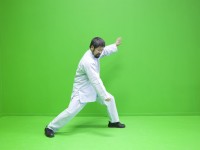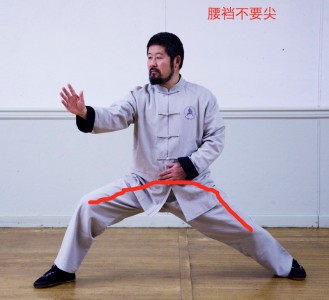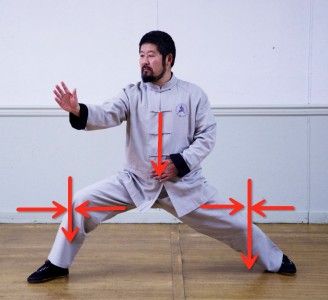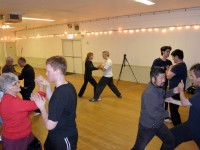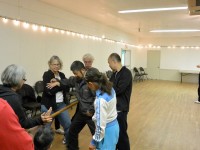Knowledge : Body and Posture
23. Brush the Knee Obliquely (Lou Xi Ao Bu)
24. Flash the Back (Shan Tong Bei )
Master Chen told me that I need to maintain axis in the arm hitting moves in the transition between 23 and 24. Observant viewer of this video might notice another detail in the transition
Please comment on what this video is showing.
There must be three stick in the body.
- Vertical stick is from the Baihui on the top of the head to Huiyin at the bottom of the torso.
This stick is absolute. There are no “ranges” allowed. - Horizontal stick is the arm.
This stick has a range. it can move within the range of eyebrow and the kua. - 45 degree stick is from rear foot to the front hand.
This stick has a range from front hand to the floor.
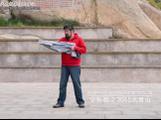 The original meaning of the word is awkward. It refers to the energy that causes the opponent to feel awkward. During the learning stage, it is the requirement of this energy that the routines of the Chen Style Taijiquan Practical Method make the learner feel awkward first. Through years of training in an awkward way, the practitioner gets used to being in this awkward position and he starts to look normal. But when dealing with opponents, he produces an effect on the opponent that is extremely awkward to deal with.
The original meaning of the word is awkward. It refers to the energy that causes the opponent to feel awkward. During the learning stage, it is the requirement of this energy that the routines of the Chen Style Taijiquan Practical Method make the learner feel awkward first. Through years of training in an awkward way, the practitioner gets used to being in this awkward position and he starts to look normal. But when dealing with opponents, he produces an effect on the opponent that is extremely awkward to deal with.
This is one of the basic reasons why taiji is difficult to learn, and once learned, other people find taiji people difficult to deal with.
Presenter: Chen Zhonghua Length: 10 min. In: Chinese Year: 2015 Difficulty:5/5 At:大青山
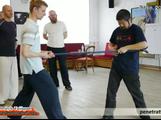
Hand-Elbow alignment on how to have penetrating power
Presenter: Chen Zhonghua Length: 9 min. In: English Year: 2014 Difficulty:1/5 At:Berlin
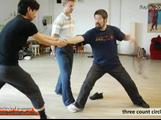
Detailed explanation and training method on alignment so energy flow in the three moves in circle.
Presenter: Chen Zhonghua Length: 26 min. In: English Year: 2014 Difficulty:2/5 At:Berlin
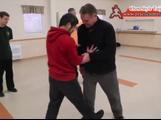
Take space out to make yourself full, and aiming to opponent lack of fullness
Presenter: Chen Zhonghua Length: 4 min. In: English Year: 2015 Difficulty:2/5 At:Toronto

This is section one of 6 sections of the Yilu Detailed Instructions video by Master Chen Zhonghua. The instruction is set against a grid wall and grid floor so students can see precise positions of each move. This is a must-have for students of the Practical Method system. This video cover: Move 1 – 13. Other video in the series: Section 2
Presenter: Chen Zhonghua Length: 21 min. In: English Year: 2015 Difficulty:2/5 At:Edmonton
You can buy all six videos for $40.00 here: http://practicalmethod.com/2020/07/yilu-detailed-instructions-all-six-sections-2015-online-video-purchase/
 I have a chance to clarify what Master Chen meant when he bring up the analogy of treating lumber by immersing it in water.
I have a chance to clarify what Master Chen meant when he bring up the analogy of treating lumber by immersing it in water.
Our body has many pockets of energy that wants to go its own direction. This may be from previous training or habitual usage. In push hand these multiple energy does not work together, and it results in leak and blockage. Read more
Master Chen says that we need to get in, get stuck, and then turn the waist. However, people do not like the feeling of being stuck. We think that we need to move around looking for any opportunity to do something. The reality is that every move is an opportunity.
Dan Tian and Kua
 In a Phoenix Workshop a couple years ago, Master Chen talked about different schools of thought related to the concept of ” Setting Up the Furnace “. This has to do with the formation of a real and working Dantien. One school of thought believes, this is done energetically and when formed causes changes in the Read more
In a Phoenix Workshop a couple years ago, Master Chen talked about different schools of thought related to the concept of ” Setting Up the Furnace “. This has to do with the formation of a real and working Dantien. One school of thought believes, this is done energetically and when formed causes changes in the Read more
This video illustrate that gears are not always round, as long as there is good connection between two rotating objects, then transfer of power will happen. Having good connection is the key of generating indirect power in the body for taijiquan purpose. Read more
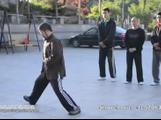
Presenter: Chen Zhonghua Length: 16 min. In: English Year: 2014 Difficulty:1/5 At:Daqingshan, China
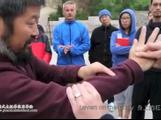
Daqingshan Full time training clip, discussing setting up a sequence of levers from arm to feet. The instructions cover the same subject repeated in chinese and english.
Presenter: Chen Zhonghua Length: 5 min. In: English & Chinese Year: 2014 Difficulty:1/5 At:Daqingshan, China
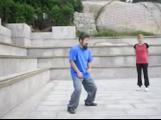
Training routine to utilize leg power from Daqingshan full time training.
Presenter: Chen Zhonghua Length: 3 min. In: English Year: 2014 Difficulty:1/5 At:Daqingshan, China
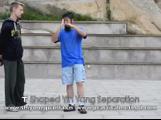
Separation in term of movement direction from Daqingshan full time course. This is one type of vector force.
Presenter: Chen Zhonghua Length: 7 min. In: English Year: 2014 Difficulty:3/5 At:Daqingshan, China
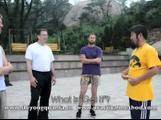
Talk on theory of original energy. clip from Master Chen Zhonghua’s 2014 Daqingshan full time training.
Presenter: Chen Zhonghua Length: 11 min. In: English Year: 2014 Difficulty:1/5 At:Daqingshan, China
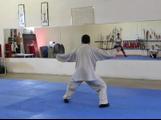
Energy alignment in Practical Method Cannon Fist form. Part One of Two Cannon Fist Alignment videos.
Presenter: Chen Zhonghua Length: 42 min. In: English Year: 2014 Difficulty:3/5 At:Phoenix, AZ, USA
Phoenix workshop participants, please contact Ping Wei for free access
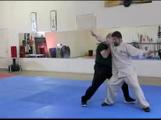
Second part of the Cannon Fist Alignment video. At the end of the video, there is a complete Cannon Fist demonstration by Master Chen Zhonghua in Italy in 2014.
Presenter: Chen Zhonghua Length: 27 min. In: English Year: 2014 Difficulty:3/5 At:Phoenix, AZ, USA
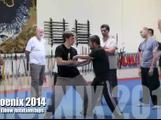
Split in Hand and Elbow, and talk on spiral power
Presenter: Chen Zhonghua Length: 7 min. In: English Year: 2014 Difficulty:2/5 At:Phoenix, AZ, USA
Phoenix workshop participants, please contact Ping Wei for free access
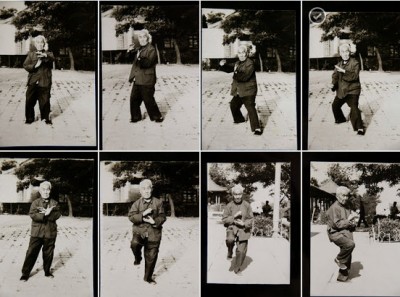 Master Chen has a google+ account with old photos Click thumbnail to go to album. Google+
Master Chen has a google+ account with old photos Click thumbnail to go to album. Google+
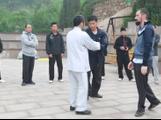 This is a short lesson Master Chen Zhonghua taught to Todd Elihu and Wu Shaozhi. Both students are advanced learners of the Chen Style Taijiquan Practical Method system.
This is a short lesson Master Chen Zhonghua taught to Todd Elihu and Wu Shaozhi. Both students are advanced learners of the Chen Style Taijiquan Practical Method system.
Presenter: Chen Zhonghua, Todd Elihu and Wu Shaozhi Length: 5 min. In: English Year: 2014 Difficulty:4/5 At:Daqingshan International Taiji Training Center
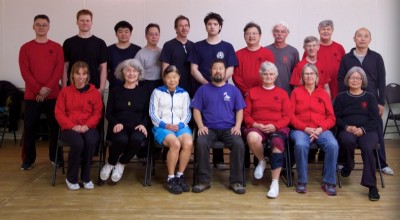 In Vancouver June 2014 workshop, Master Chen explained a common error when students doing circle. During elbow in the elbow, shoulder, front kua have to come close together. During hand out hand and rear kua have to move apart.
In Vancouver June 2014 workshop, Master Chen explained a common error when students doing circle. During elbow in the elbow, shoulder, front kua have to come close together. During hand out hand and rear kua have to move apart.
The torso/leg has to facilitate a lever during a circle, it doesn’t reverse in the middle of the move. Common error is for the kuas to reverse then this is doing a circle only on the same side of the body.
Presenter: Chen Zhonghua Length: 47 mins Difficulty: 1/5 Language: English
Year: 2013 Location: Australia
1. Beginning
2. Positive circle part one
3. Positive circle part two
4. Positive circle part three
5. Positive circle part four
6. Double positive circle
7. Double positive circle moving step (Big Red Fist)
8. Negative circle
9. Double negative circle
10. Positive-negative circle (Pole shaking)
11. Fetch water
12. Six sealing and four closing
13. Full Yilu demonstration in Perth.
Basic Foundation Video 2009 can be found here.
If you like this video, there is an even greater value in purchasing one of the packages below.
Purchase Chen Zhonghua Taiji Academy Trailers Video Package 2
NOTE:
- Video packages are designed for the convenience of students.
- Some packages are in fact classifications of videos.
- Some videos in packages might have been published and purchased by you individually.
- Average prices of videos in packages are considerably lower than individual videos. The number of videos in the package will increase until the sum of all individual video prices equal to two times or more of the package price.
- In view of this, if you have purchased a video that are also included in a package your have purchased, or vice versa, we will not give refunds or equivalents.
- All videos in packages are paid videos. They are restricted to your personal viewing and other usage. You do not have copyright of the videos and therefore you do not have permission to give/share with others.
- Please note that as a customer/user of the website and/or student of Chen Zhonghua, you have given him and the companies/organizations he represents permission to use videos or photos with you, both personally and commercially.
- Making a paid purchase constitutes agreement to the above terms.
Mini Lesson by John Dahms from Ottawa Practical Method Group
Sit the wrist is a special term used in Chen Style Taijiquan Practical Method. It means that the wrist must be stretched open into a curved position and then locked into place. This is also part of the Tile Hand requirement.
The classic mention of this term is “understanding the three joints” (明三节). Read more
The kua must be higher than the knee. This ensures that the lower body stance remains an bridge arch. If the kua is lower than the knee, then this arch is reversed.
In transitional and extreme cases, this principle is temporarily violated.
By John Upshaw and Levi Sowers
The interaction occurring amongst the various elements of our body are numerous and complex. This is especially true when applied to the movements, and thereof lack of movements, in Chen Style Taijiquan Practical Method. The purpose of this article is to provide a framework that will allow the reader to conceptualize the necessary movements that are congruent with the taiji principals, and inherent to the Practical Method system. The 1, 2, 3 theory of taiji movements will be the framework for describing these internal relationships. We hope that readers will be able to distinguish between what parts of the body moves from what does not move. When that is identified, then a clearer understanding of the lines that are stretched upon within oneself becomes more recognizable. Read more

